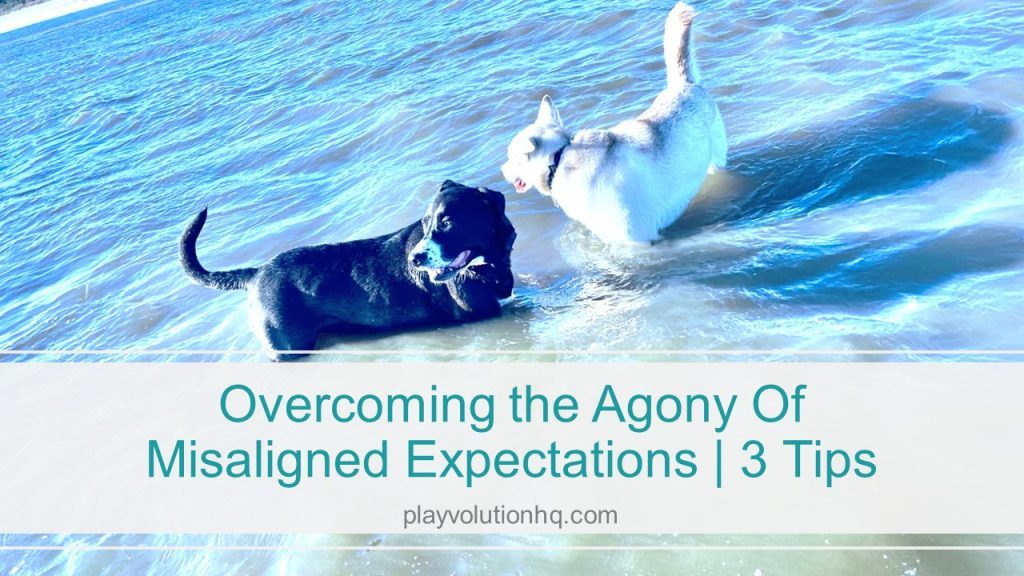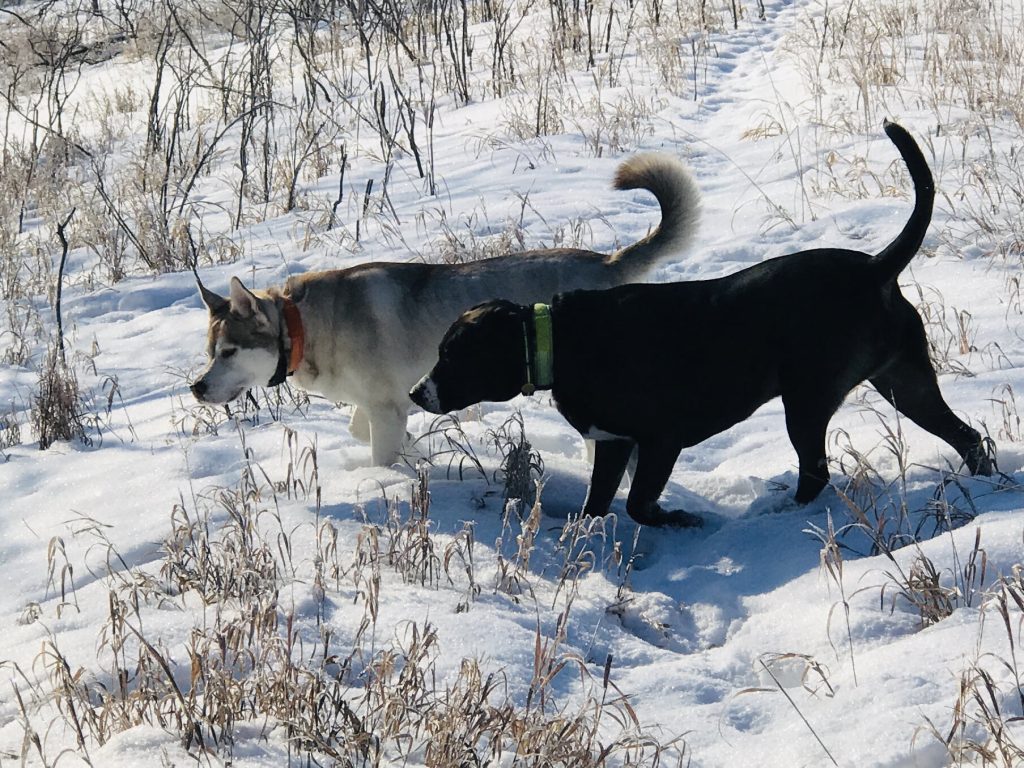
Misaligned expectations can slow progress, generate conflict, suck joy, and muck things up. Ever find yourself in a situation where your expectations are out of sync with your workmates? Like you’re working at cross purposes? Or do you have the same general goal but disagree on how to get there? It can be emotionally draining and unproductive. Below, I share 3 tips to reduce tensions and get things back on track.
Misaligned Expectations And Coworkers
Misaligned expectations in the workplace are a pain. As a child care center director for a large social service agency, I was stuck in middle management. Trying to live up to the expectations of the layers of bureaucrats above me while keeping my staff on the same path in our corner of the bigger whole sucked the life out of me. This was primarily due to the lack of continuity from the higher-ups and partially due to my inexperience in setting expectations for my team.
I burnt out and quit. My assistant director (My Wife, Tasha) quit the next day, and we started a family child care program. We worked hard to stay on the same page, and misaligned expectations faded for the most part. If there was a misalignment, we worked it out. Over the 10+ years we operated that program, there was little workplace friction.
Now, I work at running Playvolution HQ, providing online training, and making podcasts. I have two full-time workmates. When it comes to misaligned expectations, things are better than the center days and not as good as the family child care days.
I try bringing attention and focus to a Zoom meeting; they think it’s time to wrestle, yip, and bark until the windows rattle. I think it’s time to catch up on some reading; GeeGee thinks it’s time to slip her snoot between my hand and my Kindle because that hand’s sole function is to rub her nose and get her food. I think it’s time to write; Slinky believes it’s time to go outside and play. Misaligned expectations all day long.
3 Tips For Aligning Misaligned Expectations
I realized I was growing annoyed and grouchy on walks with my coworkers a while back. This bothered me since their primary duty as part of the staff was to keep me from turning into a keyboard zombie. Their job is getting me outside and moving, clearing my head, and making my heart pump. And here I was, more stressed at the end of a walk than at its start.
Reflect And Observe
The first tip for addressing misaligned expectations is to gather information through reflection and observation to understand the disconnect.
Upon reflection, it was apparent we had different expectations for our outings. Attempting to understand the misalignment, I made two lists. The first contained my personal goals for our walks. The second was my observation-based best guesses at their goals.
Here’s what I came up with:
Jeff’s Walk Expectations
- Walk without stopping every 12.37 feet
- Get dogs to do their duty
- Spend time outside
- Get some exercise
- De-stress
- Enjoy the weather
GeeGee And Slinky’s Walk Expectations
- Spend time outside
- Sniff stuff–all the stuff
- Sniff it all again–just to be sure
- Roll in interesting smells
- Leave smells for others to sniff
- Listen to stuff–rustling grass, barking dogs, far-off trains, raindrops, and all the rest
- Watch stuff–passing people, fluttering butterflies, backing recycling trucks, passing birds, and every other object (near and far) that moves
- Run
- Tussle
- Dig
- Do their duty
- Sniff some more stuff
Talk about misaligned expectations! Although we aligned on being outside, our other goals conflicted. My observations made it apparent that their primary interests were all nose-based. Although it shouldn’t have, this observation honestly surprised me.
My goal to be in motion conflicted with almost all of their goals. We agreed the whole doggie duty thing was important, but most days, it was low on their list. There was just so much sniffing to do. No wonder I was frustrated.
I’m sure they were too. My urging them to stay in motion as they strained desperately for a few precious moments breathing in the exquisite scent sprayed on a fire hydrant by another dog must have annoyed them. They were most likely as frustrated and disappointed in our outings as me.
GeeGee: “Stop pulling, Human. I’m not done inhaling the complex aroma of this dead bird!”
Slinky: “He’s always in such a hurry…that smells amazing! I’m getting notes of rot and maggot larva.”
Me: “Come on, let’s go!”
GeeGee: “What a jerk. I could have sniffed that for 20 minutes. He didn’t even let me pee on it.”
Slinky: “He’s seen how many pointy teeth we have, right? I mean, next time he’s sleeping….”
GeeGee: “He does feed us. Let’s keep working at training him.”
That was much more imaginary dog conversation than we needed. Let’s get back on track. Pausing for reflection and observation is often revealing and is an excellent first step in figuring out misaligned expectations. It requires pulling back from the misalignment and collecting information about your state of mind and the situation you’re dealing with. I don’t think doing so tends to be most people’s first response. I mean, I devoted a lot of time to slowly growing more and more annoyed, almost enjoying feeling aggrieved and frustrated. My experience is that that’s not a unique-to-me thing. Sometimes we humans accept discomfort more readily than we’re spurred to make a change. On to tip number 2.
Converse And Clarify
Converse with your coworker to clarify the reasons for the misaligned expectations.
Reflection and observation are revealing and productive, but some good old conversation based on what you sussed out during step one is likely necessary. No matter how thoroughly you reflect and observe, you’ll still need more information and insight. The big problem is that “We need to talk” conversations are uncomfortable, anxious-making, and awkward for most of us.
In my 50+ years, I’ve encountered few people eager for such discussions. Most of us try to avoid them. That’s an option. An option unlikely to change things for the better.
Lucky for me, I had to talk to these guys:

Me: “GeeGee, Slinky, we need to talk.”
Slinky tilts his head, and GeeGee sniffs my face.
Me: “It’s not me, it’s you…wait…”
More tilting and sniffing.
Me: “That’s not true. The fact is, we’re all at fault here. Here’s what I’ve noticed….”
Slinky enthusiastically licks my face. GeeGee flashes a look of disgust at him for doing such a thing.
I hope your coworkers do less sniffing and licking when you try chatting about your misaligned expectations. The goal of such a conversation is to bring the issue out in the open and try to gain an understanding of the other person’s position. It may go well. It may not. My chat with the pups didn’t clarify much, but it did become obvious I’d be responsible for making any changes to rectify our situation.
You may find the same thing. If you’re lucky, they’ll be on board and eager to contribute to addressing your misaligned expectations. Or, you may realize change will be up to you.
Change Your Practice
Create a plan to align the misaligned expectations.
As I said, the dogs were not interested in collaborating to get our working relationship back on track; my attempt at conversation made that clear as crystal. If lucky, you’ll have some help in fixing your misaligned expectations. If not, you can still use the information you’ve collected to improve things.
The next step is to build a new system of behavior, a change in practice, that improves your work environment.
The lists of expectations I shared above helped a lot with the dogs. I made two changes. First, I ensure they get more outside off-leash time every day when they are free to sniff, listen, tussle, and dig as they please. Second, I’ve started taking time every day to walk, run, bike, or kayak without them so I can get my heart thumping. These changes have made our walks together much more pleasant.
In the first paragraph, I said these 3 tips would “reduce tensions and get things back on track.” At first, that wasn’t the case with my pups. I was a tad aggravated and annoyed that I was left to do all the heavy lifting and that they seemed uninterested in something that concerned me. Then I chose to let those feeling fade and move on. I’ve had the same experience with humans.
Tensions increase if human coworkers are as unresponsive to addressing misaligned expectations as I found GeeGee and Slinky. “Devin is such a pain. We have completely different approaches to preschool art projects, and when I try to find some common ground, she looks at me like I’m out of line for even bringing it up.”
We have little influence over the changes other people make (or don’t make), but we can change our response to them. Working through these three steps and realizing that Devin will keep making craptivities with the kids and that you probably can’t change that can increase tension and frustration. It can also be empowering if you choose to let go of the stress and frustration. You can choose to accept her as she is and keep offering up the process-focused art opportunities you prefer. Free yourself from the need to change her, and invest that energy into other parts of your life.
Misaligned Expectations Wrap Up
The thing about misaligned expectations with coworkers–even when the coworkers are dogs–is that they can occur when we know better and think we’re doing a decent job meeting everyone’s needs. Keeping an eye out for them means you can address them before they cause too much trouble-even if your coworkers are uninterested in helping. Many conflicts in early learning settings can be avoided when thought is put into understanding and aligning expectations.
Contribute content to Playvolution HQ
Brought to you by Explorations Early Learning
Browse Trainings
Post Author
Jeff Johnson is an early learning trainer, podcaster, and author who founded Explorations Early Learning, Playvolution HQ, and Play Haven.



Leave a Reply